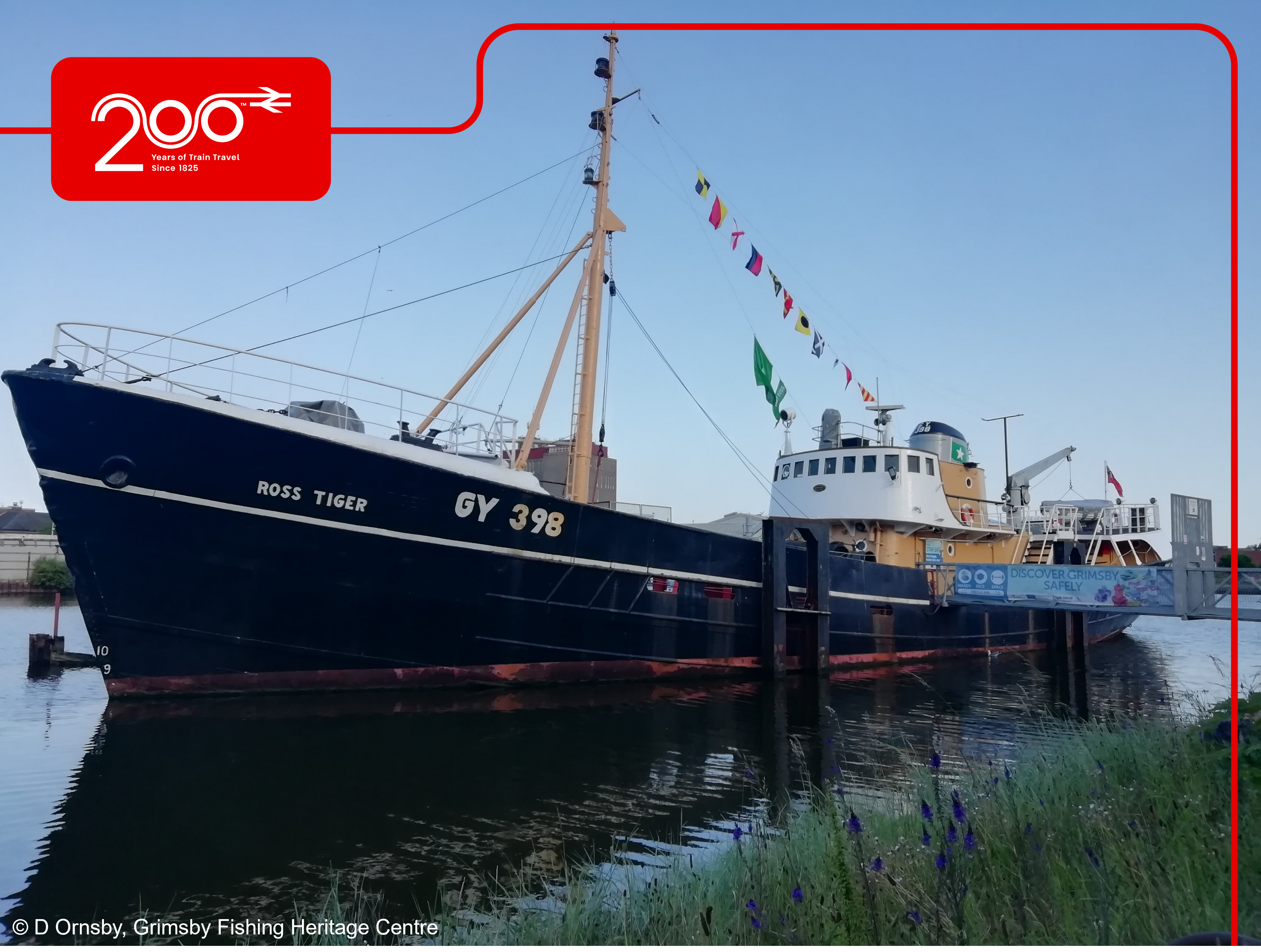Welcome to today’s article celebrating Railway 200! This week, as we approach the 200th anniversary of the modern railway, with the opening of the Stockton and Darlington Railway on 27 September 1825, we will be posting a different story every day highlighting the connections between rail and maritime heritage. Today, we will take a closer look at Lincolnshire’s port town of Grimsby and the Grimsby Fishing Heritage Centre.
The town of Grimsby is located at the mouth of the Humber, an optimal spot for fishing and other coastal industries. Sea trade in the area dates back many centuries, but it was the development of the docks in the late 1700s and the early railway in the 1800s that firmly connected Grimsby to the rest of Britain. The Manchester, Sheffield, and Lincolnshire Railway developed the port from the 1840s onwards, expanding the old existing dock into the current Alexandra Dock, building a new Royal Dock, and creating a whole new system of Fish Docks dating back to 1856. Those developments, coupled with the growing railway network, enabled the Grimsby fisheries to supply fish all around the country, most notably to the Billingsgate Fish Market, at the time the largest fish market in the world.
By late 1800s around 10% of all fish caught in the UK was coming from the general Grimsby area, and the success of the Grimsby port was heavily supported by the rail links which allowed for the steady supply of fish to the nation. The Grimsby Town railway station opened in February 1848 and has been operating ever since. Two other stations have also operated in the area, the Grimsby Docks and Grimsby Pier, with the former still serving passengers today while the latter closed at the end of the 19th century.
Today, you can visit the Grimsby Fishing Heritage Centre and explore the 1950s heyday of the fishing industry in this nationally recognised port. The Centre showcases highlights from Grimsby’s past and invites visitors to engage with history through carefully crafted recreations, preserved trawler interiors, and guided tours. An exhibition hosted in 2023 at the Grimsby Fishing Heritage Centre celebrated the 175th anniversary of the town’s main railway station opening, while earlier this year the Centre’s visitors could enjoy a poster exhibition, Rambles in Lincolnshire, featuring close to 100 original posters advertising railway tourism in the area. This year also saw a blue plaque placed at the Centre in honour of Sir Edward Watkin, an entrepreneur who supported railway infrastructure plans in the region and played a major role in the development of the docks in Grimsby, ensuring the fish caught by Grimsby fishermen would have a direct link to London.
The Ross Tiger, a 1950s Grimsby trawler and a Registered Historic Vessel, is based at the Grimsby Fishing Heritage Centre and is one of the main visitor attractions. She is thought to be the UK’s oldest surviving example of a diesel side-trawler, designed to operate within middle to deep waters, and with the capacity to fish from both port and starboard sides. During her working days she could comfortably sail around the North Sea, Faroe Islands, and the coast of Norway, and even travel into the Arctic waters during the summer months. Today, the Ross Tiger is a static museum ship. Her preserved interiors and atmosphere on board capture the ways of life gone by, providing the public with an opportunity to travel in the footsteps of the trawlermen and get a glimpse into the rich maritime history of Grimsby, as well as an understanding of how the fish caught in this special port could supply the whole nation, all thanks to the power of railways.
Join us tomorrow as we continue celebrating Railway 200!

